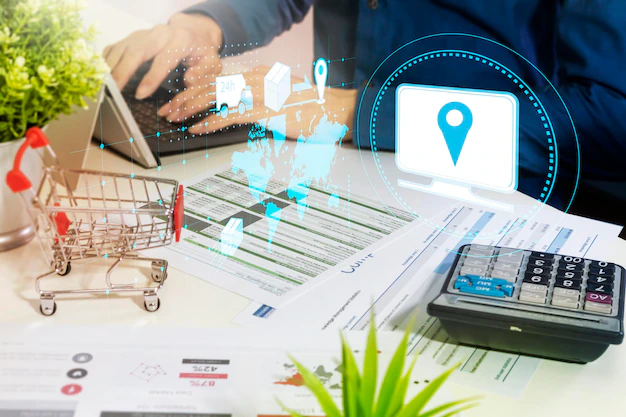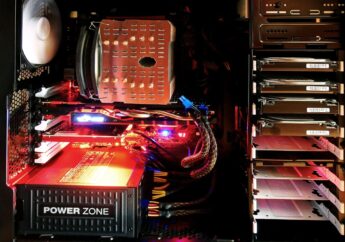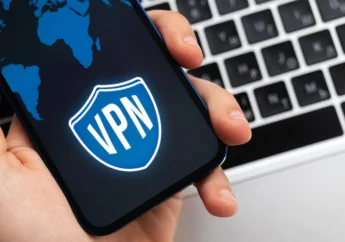How To Choose The Best Procurement Software: 10-Step Checklist
by Ankita Tripathy Technology 14 December 2023

Seeking the most suitable procurement software may prove overwhelming due to the many options. With many choices, it can take time to identify the ideal solution that meets your company’s specific needs.
Nevertheless, a 10-step checklist can help simplify the process and increase the likelihood of selecting the optimal procurement software for your organization from companies like GEP and other global players. By carefully evaluating each step, you can make an informed decision supporting your business’s growth and success.
However, let us start with understanding what it is.
What is Procurement Software?
Also known as purchasing software, it assists businesses in automating the procurement process from start to finish, including supplier management, purchase order management, invoice processing, and payment monitoring.
The system consolidates supplier data into a single source of truth, allowing companies to evaluate suppliers, renegotiate contracts, and make well-informed buying judgments.
Furthermore, the platform automates the generation and administration of purchase orders, reducing mistakes and improving consistency across the organization.
In addition, it simplifies the procedure of matching invoices to corresponding purchase orders and receipts, saving money and minimizing the possibility of fraudulent activity.
With real-time data analysis capabilities, the software gives businesses transparency into spending habits, vendor performance, and general procurement effectiveness.
Organizations may spot problematic regions, improve procurement methods, and obtain favorable vendor agreements using these insights. Automating tasks and providing valuable insights enables businesses to make more streamlined decisions and drive strategic procurement initiatives.
The Significance
Implementing the purchasing software can significantly benefit an organization by simplifying and centralizing the purchasing process, providing valuable insights through data analysis, optimizing procurement strategies, negotiating better deals with suppliers, tracking expenditures, and enhancing transparency.
The software can streamline the purchase process by automating tasks such as generating purchase orders, sending requests for quotes, and managing supplier contracts, saving time and reducing the risk of errors.
Additionally, it enables organizations to analyze procurement data to discover patterns, trends, and cost savings opportunities.
The platform also facilitates better supplier management by maintaining a centralized supplier database and providing real-time visibility into procurement activities. Likewise, it enables organizations to track expenditures and ensure compliance with internal policies and regulations.
The software also enhances transparency by creating a transparent and auditable trail of all procurement activities, promoting accountability and compliance.
Implementing this software can help organizations drive cost savings, remain competitive, and achieve sustainable growth.
The 10 Vital Checks for Smart Selection!
Selecting the appropriate software is of utmost importance for organizations as it can significantly improve the efficiency and productivity of their procurement processes.
With numerous available options, it is crucial to carefully evaluate various factors before deciding. Here are ten key points to consider when choosing the right software:
1. Mobile Accessibility:
Mobility is critical in effective procurement processes in today’s rapidly evolving business landscape. Selecting a procurement software system that offers mobile compatibility is essential, enabling users to manage various procurement tasks efficiently remotely.
With the increasing reliance on tablets and smartphones, it’s essential to have software that can be accessed anywhere, anytime. Mobile accessibility enables procurement professionals to stay connected and manage tasks even when away from their desks.
Whether approving purchase orders, tracking deliveries, or communicating with suppliers, accessing the software on mobile devices ensures seamless workflow and timely decision-making.
2. Ease of Use:
User-friendly software is essential to minimize training time and maximize adoption. Look for software with an intuitive interface and comprehensive user guides or tutorials.
Complex and difficult-to-use software can hinder productivity and lead to resistance from users. Choosing purchasing software that is easy to navigate and understand is essential.
An intuitive interface, clear instructions, and user-friendly features can reduce the learning angle and improve user adoption. Hunt for software that provides comprehensive user guides, tutorials, and customer support, ensuring a smooth transition and effective software utilization.
3. Integrations with Accounting Systems:
Seamless integration between your software and accounting system is vital for accurate financial reporting. Check if the software can sync with your existing accounting software.
Accurate financial reporting is crucial for any organization. When selecting the software, it’s essential to consider its compatibility with your existing accounting system.
The smooth integration of these two systems enables accurate and efficient synchronization of financial data, minimizing the need for manual data entry and mitigating the likelihood of errors. This integration allows real-time visibility into procurement-related expenses, simplifies budgeting, and facilitates accurate financial reporting.
4. Customer Support:
Look for a responsive and knowledgeable support team that can assist you promptly when issues arise.
Having reliable customer support is essential when implementing and using the purchasing software. Look for a software vendor that offers responsive and knowledgeable customer support.
A dedicated customer support team can provide timely assistance, address any concerns, and resolve challenges that may arise during the integration or usage of the software. It ensures a smooth experience and minimizes downtime, allowing you to focus on your core procurement activities.
5. Supports the Entire Procurement Cycle:
Verify that the software covers all stages of the procurement process, from requisition to payment. A comprehensive solution will enable you to manage the entire procurement lifecycle efficiently.
Procurement involves multiple stages, from requisition and sourcing to contract management and payment. It’s vital to choose software that supports the entire procurement cycle. A comprehensive solution allows you to streamline and automate each stage, ensuring efficiency, accuracy, and compliance.
From creating purchase requisitions to managing supplier relationships, having software that covers the entire procurement lifecycle enables seamless collaboration, reduces manual effort, and improves overall procurement performance.
6. Real-Time Budget Tracking:
Real-time budget tracking allows you to monitor spending and ensure that purchases are within budget limits.
Effective budget management is crucial for any organization. With real-time updates on budget utilization, you can monitor expenses, track commitments, and make informed decisions.
This feature enables proactive budget management, reduces the risk of overspending, and ensures financial discipline throughout the procurement process.
7. Digital Audit Trails:
A robust purchasing software should provide a detailed audit trail for transparency and accountability. This feature allows you to track all procurement-related activities, making audits hassle-free.
Audit trails are crucial in ensuring transparency and accountability in procurement processes. When selecting the software, look for a solution that provides a detailed digital audit trail.
This feature records and tracks all procurement-related activities, including approvals, changes, and communications. A comprehensive audit trail simplifies audits, enhances compliance, and transparently records all procurement activities, ensuring accountability and mitigating risks.
8. Insights and Reporting:
Analytical capabilities are crucial for making informed procurement decisions. Choose software that offers comprehensive reporting features to generate actionable insights.
Data-driven decision-making is essential for optimizing procurement processes and achieving strategic objectives. The platform that offers comprehensive reporting features enables you to generate actionable insights from procurement data.
Analytical capabilities such as spend analysis, supplier performance tracking, and demand forecasting empower you to identify trends, optimize costs, and make informed decisions. Look for software that provides customizable reports, interactive dashboards, and advanced analytics to unlock the full potential of your procurement data.
9. Expense Management:
Ensure the software provides expense management functionality, allowing you to track and manage expenses effectively.
Expense management is a critical aspect of procurement. Software that includes expense management functionality enables you to track, monitor, and manage expenses effectively.
From capturing and categorizing expenses to automating approval workflows and generating expense reports, this feature simplifies expense tracking and ensures compliance with organizational policies.
Look for software that provides robust expense management capabilities to streamline processes, reduce manual effort, and improve expense control.
10. Vendor Management Capabilities:
Check if the software includes vendor management features such as supplier performance tracking, contract management, and vendor collaboration.
Effective vendor management is essential for building strong supplier relationships and ensuring the availability of quality goods and services. Software with vendor management capabilities enables you to track supplier performance, manage contracts, and collaborate effectively with vendors.
From evaluating supplier performance to negotiating contracts and managing vendor information, this feature streamlines vendor-related processes, improves communication, and enhances overall procurement efficiency.
Are You Ready to Purchase?
Now that you’ve completed the 10-step checklist, it’s vital to assess your organization’s individualized needs and select the most suitable procurement software. As every business has distinct characteristics, it’s crucial to identify a software solution that caters to your company’s requirements.
Investing in the right software will enhance your organization’s procurement process, improve efficiency, and contribute to long-term success.
Though the process of choosing the best software may take time, the benefits it brings are well worth the effort.
So, start your journey towards streamlined procurement today by selecting the right software with the help of this 10-step checklist!
Read Also:







































































































